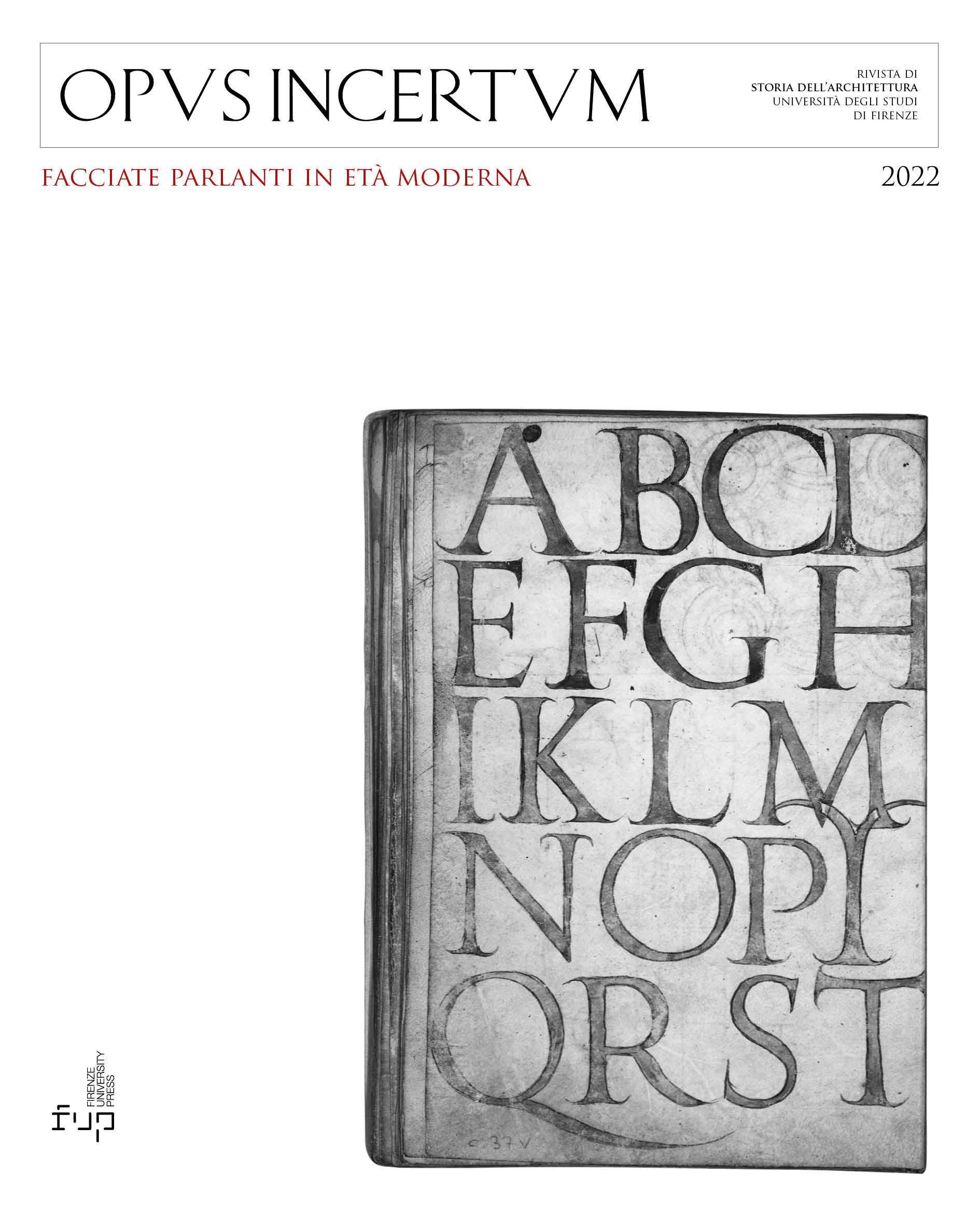Published 2022-11-26
Keywords
- Inscriptions,
- all’antica revival,
- epigraphy,
- façade,
- patron’s ambition
How to Cite
Abstract
Since antiquity, buildings have carried inscriptions on their surface. In particular, the habit of decorating façades with epigraphs spread in early modern Europe, in keeping with the all’antica revival. This issue of the journal investigates the role of new and ancient inscriptions (i.e. spolia) in secular and religious architecture from an aesthetic, political, literary and artistic point of view. Expression of the patron’s ambition and culture, the facciate parlanti engaged in a close dialogue with public spaces and their audience. While the inscriptions could be in different languages and media (carved on stone, graffitied or painted), they always retained a particular relationship with the building itself, as well as with the social and urban context.



